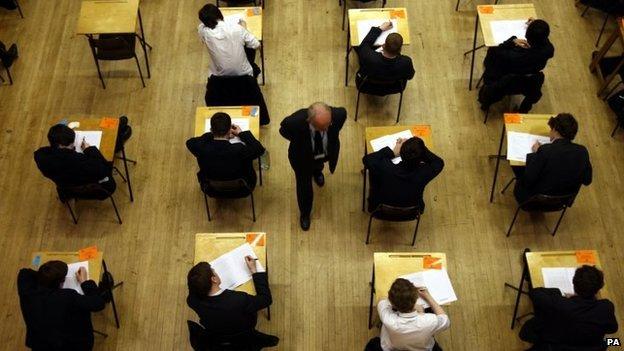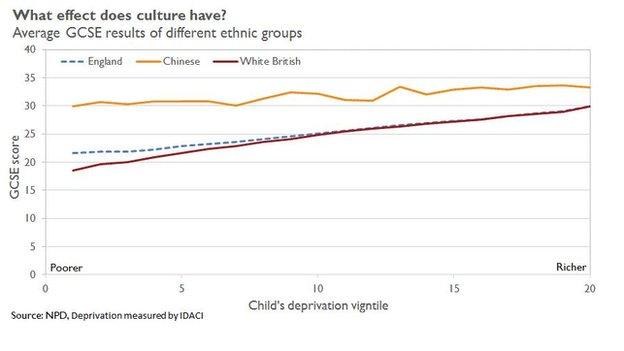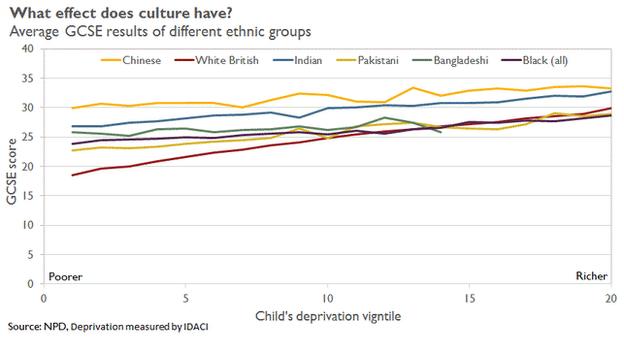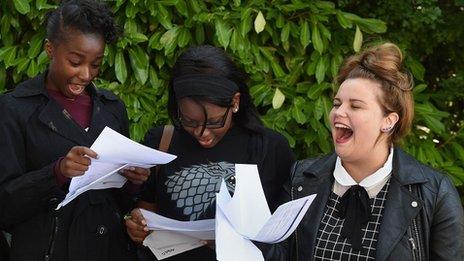What effect does culture have on learning?
- Published

How important are schools? That's the question posed by John Jerrim, a researcher at the Institute of Education.
To answer it, he looks at, external Australian families of Chinese heritage.
They go to Australian schools and yet they do not seem to absorb teaching like other Australians.
On one of the PISA tests, an international test, they scored "two years ahead of the average child living in either England or Australia". Home culture really matters.
You can see the same if you look at the numbers on British-Chinese families.
First, you should remember that they are relatively few in number.
There are only about 2,000 Chinese children in each year taking GCSEs, so you cannot draw too wide-ranging a conclusion.
Dissolved into system
But that actually creates one helpful element for analysis.
There are no schools where Chinese pupils are a majority.
In 2013, there were only 36 state secondaries with more than five Chinese pupils in the year group taking GCSEs.
That year, the state school in England with the most Chinese students had 19 of 160 students - 70% of British-Chinese 16 year olds had fewer than three other Chinese pupils in their year group.
Why is that helpful? Because Chinese pupils are not changing their schools by dint of their numbers.
They are dissolved into the school system, so distinctive things about them are probably linked to their backgrounds.
Here is a graph showing the average GCSE results of pupils in England who give their ethnicities as "White British", "Chinese", and for the country as a whole.

The results are a points score: we give pupils eight points for each A* down to one point for a G, then add up their scores for English, maths and their three best other subjects to give a mark out of 40.
I have split the results so that the poorest results of the children from the poorest backgrounds are at the left.
The best-off students' results are at the right.
What you can see is that the poorest Chinese pupils, while being fully submerged into the system, get results that stand apart.
The poorest Chinese children get roughly the same average marks as the richest children nationally.
Slavish copying
Why is this more than a curiosity?
As Dr Jerrim writes, we should be careful about the current fashion in education: there is a lot of slavish copying of East Asian learning methods.
What these sorts of analyses show is that those countries do well on PISA tests, but their schools have a big advantage in that they operate in a different learning culture; the usual explanation for East Asian academic success is parental attitudes to learning.
If I start layering in other ethnicities, incidentally, you can see the same sort of effects. (The Bangladeshi line cuts out where there are too few children to make the line meaningful.)

These lines are harder to interpret because they are larger groups, who are often concentrated into small areas and former a larger part of their schools.
So the relationship between school and culture is muddier.
One thing is pretty stark, though: the challenge of the hundreds of thousands of white, British children living in our poorest neighbourhoods.
Even within London, England's most successful school system, they underperform against children in the same classrooms from other backgrounds.
But, as with the success of Chinese pupils, it's surely an issue that's bigger than what happens inside the schools.
- Published9 October 2014

- Published9 October 2014

- Published21 August 2014
